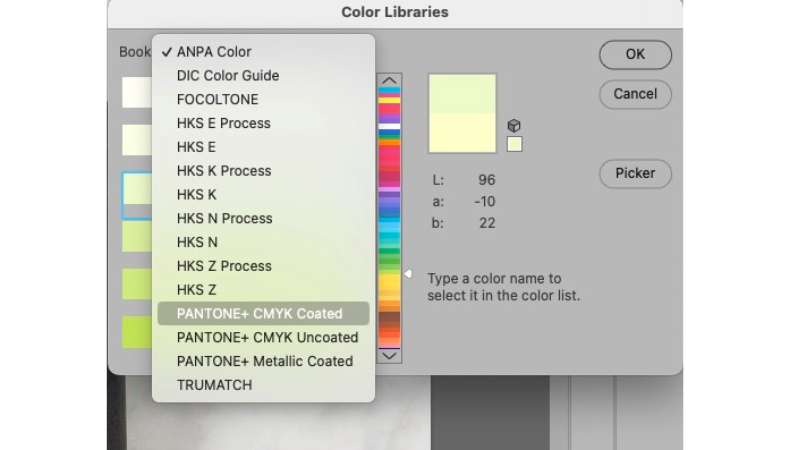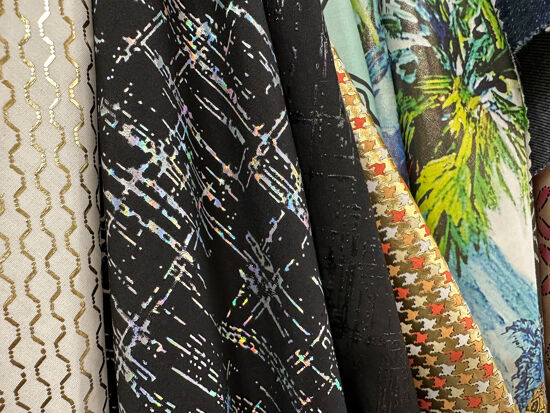A new update on Adobe and Pantone colours
.png?width=750)
Paul Sherefield discusses the update on Adobe and Pantone colours. In November 2021 Adobe announced that it will be withdrawing the Pantone colour libraries from the next versions of the Adobe CC suite, due in March 2022.
Back in November 2021, Adobe previously announced that it will be withdrawing the Pantone colour libraries from the next versions of the Adobe CC suite, due in March 2022. To read more about this change, visit here. However, this action was delayed until late Summer 2022.
As can be seen from the screen shot below, the only Pantone Color Libraries now included were Pantone+ CMYK coated and uncoated and Pantone + Metallic coated. The reasoning and use case for retaining these Pantone libraries is unclear!
.jpg?lang=en-GB)
As covered in the first blog, a subscription to Pantone Connect is required to download the Pantone Color Libraries into Adobe CC apps. The cost at that time, August 2022 was £42.99 per year for a single user.
Then in November 2002, Pantone increased the single user annual cost to £89,99, an increase of 109%. The monthly subscription costs increased from £5.99 to £14.99, an 150% increase.
The Pantone Connect software has been criticised by some as being unstable and difficult to use.
Interestingly the older Pantone Color Manager software supplied with X-Rite spectrophotometers does still seem to be working, downloading the latest v4 Pantone Color Libraries into Adobe CC or as seen on the screen grab below, the option to save the Pantone Color Library in several formats.
The Color Libraries from Pantone Color Manager are based on M2 measurements which may be an issue for some workflows and printing conditions.
It is uncertain if this software, while still working with the latest Apple OS, will work with the newer X Rite spectrophotometers.
.jpg?lang=en-GB)
Some alternatives?
All the above issues of cost and ease of use caused by this action has resulted in several work arounds and alterative options being discussed and offered.
One of the most interesting, in which this author was involved, is the BBCG (Better Brand Color Guides) project from Eddie Hagen of Insights4print.ceo. This is based on brands using an open colour specification to create brands colours and colour libraries within Adobe CC and others such creative software’s. This is based on using CIE Lab values rather than unspecified RGB or CMYK or a proprietary spot colour system.
This was my comment regarding this project;
“In my many years of hands-on experience, I’ve seen too many brand and corporate identity manuals, both from national and internationally well know names, that are imprecise and therefore inaccurate when specifying brand and corporate colour for use in the many different medias available.
CMYK and RGB values, e.g., are often quoted with no reference to an ICC profile or use case. Resulting in a brand colour that will look different for every combination of printing process and substrate used. Project BBCG aims in clear terms to improve the reproduction of brand and corporate colours and the way they are specified to the many types and media, and communicated to all involved in accurate colour reproduction, including designers.”
For further information visit here.
At the other end of the scale is the ‘open source’ movement which considers that all colours are free. One of these has produced a ‘FreeTone’ pallet of spot colours. For more, information please visit here.
Please be aware that FESPA does not recommend or endorse any of these options. They are shown as some of the ways the industry is responding to the Adobe/Pantone issue, not as a recommendation. You should be sure that any alternative will meet you and your client’s needs.
CxF (Color Exchange Format)
When talking about Pantone and spot colours we must consider the CxF format, devised by X Rite in 2000, now covered by ISO standards. For more information on this please read this article from Club FESPA.
CxF provides foe device independent spectral measurements of colour.
ISO 17972-4:2018 Spot color characterisation data CxF X4, provides an open way of describing spot colours and their half tone values. It can also give ink manufacturers the data for matching an CxF defined colour when producing an ink.
It would seem to be the best way of creating ‘open’ libraries for spot colours for brands and corporates. Sadly, its use in applications does prevent its wider use at present.
While supported by several high-end proofing, colour management and workflow systems including PDF, it at present, is not supported by most desktop creative packages such as Adobe CC, QuarkXPress or Coral DRAW Graphics Suite.
Until CxF is supported by these creative software apps, it will not have the wider use it deserves in specifying spot colours across the complete graphic arts workflow and within the many processes and medias used.
Adobe and PostScript Type 1 fonts
In a less controversial decision and just in case you have not heard, Adobe announced in early 2021 that it would be ending support of Type 1 fonts in all Adobe CC products in January 2023. The link below is from Adobe.
This was not surprising as this font ‘format is nearly 40 years old, has been replaced by the cross-platform OpenType format since the 2000’s. The first thing to do on your Mac is to open the Font Book app.
.jpg?lang=en-GB)
Image caption: please note the above screengrab is from MacOS Ventura 13.01. Font Book in earlier OS’s do look a little different.
In the top right ‘Search’ box enter Type 1, which will then show the Type 1 fonts on your system. Also, by clicking on the ‘Info’ ikon alongside the Search box will open the panel shown to right of the fonts list as above.
If you have any Type 1 fonts and they’re in use for your work, you will need to replace then with the OpenType version. If you have an Adobe Creative Cloud subscription, they may be available free from Adobe Fonts.
There are some apps that will convert Type 1 fonts to OpenType fonts, but this may be against the creators licensing agreement!
Topics
Interested in joining our community?
Enquire today about joining your local FESPA Association or FESPA Direct
Recent news

How to master colour measurement in digital printing with Barbieri
In this podcast episode, Debbie McKeegan interviews Viktor Lazzeri, COO of Barbieri Electronic, to discuss the critical role of spectrophotometers in achieving colour accuracy in digital printing.
_3.png?width=550)
FESPA Awards - excellence in interior printing, printed labels and packaging
FESPA Awards have become a highlight in the print and signage industry, showcasing the best in creativity, technical expertise, and sustainability across 18 specialist categories judged by a panel of industry professionals. This article highlights 3 winners from 2023, CGI Creative Graphics, Bell Printers, and X-Treme Creations whose work demonstrated the innovative possibilities in interior print, labels and packaging.

The importance of automation and digitalisation in textile printing
The Procedes Group is one of the biggest organisations in textile printing. Automation and digitalisation play a key role in this. Sonja Angerer speaks to Managing Director Alexander Beilken and discusses how the company based in Lemwerder managed to achieve this.
